Off-the-beaten-path Small Town Digital Nomad Destinations
If you’re like us, finding the best small town destinations and off-the-beaten-path gems is a big reason why we love working remotely.
Since becoming digital nomads in 2014 and trying out various places to live and work abroad, we’ve learned an important lesson:
Some of the big “digital nomad hubs” are not really our style.
We realized that we’re really not big city people. We’re not particularly nightlife people. We think co-working spaces are cool, but we can almost never justify paying for them because wifi’s always included in our apartment rentals.
It’s easy to find information about digital nomad destinations with these big city amenities and growing nomad/entrepreneurial communities – the Chiang Mai‘s and the Medellin‘s and the Barcelona‘s.
We’ve been to some of these places, and we enjoyed them. We can definitely see the appeal, no doubt. But since we are blessed with the freedom to choose, we humbly prefer something else.
We’ve learned to be discerning when getting destination advice from our fellow nomads. Everyone has different tastes and different needs, so different places suit some travelers better than others.
We figured out what we like through trial and error.
We found that it tends to be smaller towns with a well-preserved local culture. Many of the places we like have a decent sized expat or retiree population – folks looking for an affordable cost of living without giving up too much comfort.
So for this blog post, we’ll share some of our favorite small town digital nomad destinations from our travels so far. And since we’re trying to find more great places to visit in the future, I solicited advice from other bloggers and nomads.
Here’s the criteria we used to come up with this list of off-the-beaten path small town digital nomad destinations:
– Worth staying for a month or more (not necessarily because there’s tons of things to do but it’s just a pleasant/beautiful place to live in general)
– Has decent internet or cell data options
– Has amenities enjoyed by expats/visitors but not one big tourist trap (still has thriving local life/culture)
– Has a relatively LOW cost of living
– Not a big city/metropolis (think: no skyscrapers)
Of course, some of these qualifications are subjective, so certain destinations will be stronger on some points and weaker on others.
Many nomads may notice that Bali is missing from the list. While Bali is loved by many nomads and it’s relatively small, so far no one has come up with a convincing argument for a town that’s not already over-run by foreigners. Hence, it’s not on the list for now.
Since this post gets pretty long, here’s the quick list first. Towns with a *star* are destinations covered in more depth below:
Europe
– Tbilisi, Georgia*
– Zadar or Sibenik, Croatia*
– Bansko, Bulgaria*
– Portimão and Sagres (Algarve), Portugal*
– Cagliari, Sardinia*
– Plovdiv, Bulgaria*
– Cluj-Napoca, Romania*
– Noia, Galicia, Spain
– Mojacer, Spain
– Eger, Hungary
– Sibiu, Romania
– Javea, Spain
– Arona, Tenerife, Spain
– Tarifa, Spain
– Lucca, Italy
– Loannina, Greece
Latin America/Caribbean
– Cuenca, Ecuador*
– Merida, Mexico*
– Salento, Colombia*
– Montevideo, Uruguay*
– Antigua, Guatemala*
– Sayulita, Mexico*
– San Pancho, Mexico*
– Holetown, Barbados
– Placencia, Belize
– San Miguel de Allende, Mexico
– Guanajuato, Mexico
– Unconfirmed: Lake Chapala or Querétaro, Mexico
– Unconfirmed: Cotacachi, Alausí, Urcuquí, or San Martin, Ecuador
Asia
– Hoi An, Vietnam*
– George Town, Penang, Malaysia*
– Kuching, Borneo, Malaysia*
– Angeles City, Philippines*
– Jyrgalan, Kyrgyzstan*
– Dalat, Vietnam*
– Kampot, Cambodia*
– Luang Prabang, Laos
– Dumaguete, Philippines
– Krabi Town, Thailand
– Pokhara, Nepal
Africa
– Lamu, Kenya*
– Essaouira, Morocco*
– Morgan Bay, South Africa*
– Chefchaouen, Morocco
New destinations added in 2023. Originally published in 2018.
Nomad Destinations in Europe
While some parts of Europe are quite expensive, there are still plenty of low-cost destinations to be found. Affordable cities like these are popular with nomads, but let’s look at some smaller European towns a bit more off the beaten track.
Tbilisi, Georgia
Contributed by Rohan, Travels of a Bookpacker (contributed in 2018)
Tbilisi is a quirky and beautiful city in the perfect position between Europe and Asia. We meant to go for a few days and ended up staying weeks to enjoy all the city had to offer. We’ve often thought about settling down in Tbilisi and think it has everything digital nomads need.
All of the internet we experienced in Tbilisi (cafes, apartments and hostels) was of a decent speed and we were able to upload images and stream TV shows without problems. We also picked up a sim card with 5GB of data for around €6. Almost all cafes had free WiFi. Rental prices in Tbilisi vary greatly depending on the area of the city from around €300 per month in the city centre to as low as €100 on the outskirts.
Food is great value in Tbilisi and Georgian cuisine is some of the best in the world! A meal at a nice local restaurant costs around €3-6 and is best washed down with some Georgian wine. There is also a great café scene in Tbilisi. Try Kiwi Vegan Café, Begemot Books and Coffee or Kafe Leila for great coffee and food.
There are lots of things to keep you occupied in Tbilisi including the fortress, botanical gardens and even a puppet theatre. Our favourite activity was meandering through the streets of the old town spotting gorgeous balconies followed by a soak and a scrub in the traditional sulphur baths. Tbilisi is also brilliantly located for day and weekend trips to other areas of Georgia such as Signaghi in the wine region or the ancient capital of Mtskheta.
Zadar or Sibenik, Croatia
Jedd and I made our home base in Zadar, Croatia for a month in the off season and got to visit nearby Sibenik a couple times as well. Both have beautiful Old Towns full of history, cafes, and sea views. Most locals have a decent grasp of English, if they’re not perfectly fluent, so it’s easy to get around.
Croatia’s Dalmatian Coast has become a huge tourist destination, but the primary stops are further South in Split and Dubrovnik. While Zadar is starting to see more and more cruise ships come to port, the crowds are not as hectic once summer winds down.
Apart from the beaches and water sports, this area is also known for great produce, wineries, hiking, biking, and history.
Our favorite things to do were simply wandering through the old Roman streets, shopping at the farmer’s markets, and watching the sunset over the ocean each night. You can find affordable and delicious three-course meals at restaurants (compared to the rest of Western Europe).
Both Zadar and Sibenik are also well positioned for lots of little day trips, which you can do by bike, ferry, bus, or rental car.
This might not be the best for young singles, but it’s great for folks who enjoy a slower pace. The digital nomad community in Zadar is small, so it’s best if you’re content to explore on your own and get to know locals. There is a co-working spot a short walk from Old Town called COIN Zadar.
Plovdiv, Bulgaria
Contributed by Allison, Eternal Arrival (contributed in 2018)
Plovdiv is one of the oldest cities in the world. It was a major city for the Romans and even includes an incredibly well-preserved Roman amphitheater at the center of town. It’s the second largest city in Bulgaria but with less than 400,000 residents, it maintains a small town feel, especially in the Old Town and the hipster neighborhood of Kapana.
Plovdiv is going through a bit of a renaissance, as it has been named the European capital of culture for 2019. Work is going on continuously to improve and upgrade the center of town. That said, it is still incredibly peaceful and easy to find great restaurants, cafés, bars, small boutique shops, and the like all over Plovdiv, as well as convenient international chains like H&M and Zara.
Bulgaria boasts some of the fastest internet in Europe. In fact, Bulgaria’s internet is the 20th fastest in the world, which is pretty impressive! Free wifi is available everywhere, including many parks and virtually every café or restaurant. It is pretty stable and fast, and I had no problems streaming, Skyping, and uploading photos during my time living in Bulgaria.
The cost of living is quite low. Airbnbs range from $300-600 per month, but you can get an apartment for cheaper if you are willing to rent directly from a local long-term. Eating out is quite cheap – figure around $5-7 for a meal with drinks. Beer is quite cheap, around $1-2 out — and about $2 for a 2 liter bottle in the store! Groceries are on par with elsewhere in Europe, but produce in particular is cheap.
A few must-dos in Plovdiv include checking out the artsy hipster district of Kapana, seeing the old Roman amphitheater, and exploring the UNESCO World Heritage Site of the Old Town. If you want to get out of Plovdiv, you should definitely check out the capital of Bulgaria, Sofia, just a two hour bus ride away. Other fun day trips include visiting the Rhodope Mountains and ski towns like Bansko and Pamporovo, visiting the other UNESCO site of Veliko Tarnovo, checking out the Rose Valley, or doing wine tours in the region. There are countless day trip opportunities all throughout Bulgaria so there’s really something for everyone.
I’d recommend people to try to find an apartment within walking distance of the Kapana neighborhood, because it has the best opportunities for cafés to work in and the widest variety of food, drinks, and coffee. Taxis are cheap and an easy way to get around if you don’t feel like walking. Most people speak a little bit of English — especially in Kapana and Old Town — so while learning a bit of Bulgarian is polite, it’s not a necessary for daily life unless you really want to dive into the local culture.
Portimão, Portugal
Contributed by James, Portugalist (contributed in 2018)
The Algarve in Southern Portugal could be perfect for your next getaway. It has great weather (even in winter), decent internet speeds, and the cost of living is very affordable by Western European standards. I’ve spent close to a year living in various towns in the Algarve including Lagos, Silves, Ferragudo, and Portimão and it’s one of my favourite places to go and get away from it all.
There are plenty of towns on the Algarve to consider, but one that’s often overlooked is Portimão. Although 2 km from the bustling seaside resort of Praia da Rocha, Portimão attracts very few of the thousands of overseas visitors that flock there every year for sun, sea, and sand. It’ss probably your best bet for an authentic Algarve experience.
Portimão and Faro are the two main hubs in the Algarve, and as such the internet speeds are strong and reliable in both – essential if you need to Skype with clients, or just want to watch Netflix. Generally, you’ll find good internet connections in most Algarve towns although the quality can go down the further into the countryside you go.
Spring, autumn, and winter are the best times to visit, and this is when you’ll find the best deals on accommodation. It’s still possible to find apartment rentals for less than €500 or €600 per month in the summer, but you’ll have to look a lot harder.
In the Algarve, it’s possible to eat out for as little as €5-7. That often includes the ‘couvert’ starter, a main, a desert, wine, and coffee. Groceries are also cheap, and often cheaper if you shop at the market. Portimão’s market is one of the best in the Algarve, so you’ll probably do the majority of your shopping there.
There isn’t a lot to see and do in the Algarve by big city standards. It is, however, a great destination for walking and a growing cycling destination as well. Beaches are the main attraction here, and you’ll probably spend a lot of time exploring all of the different ones along the Algarve. Toward the West, there’s surfing and, if you don’t already know how to surf, this could be the perfect opportunity to learn!
Bansko, Bulgaria
Contributed by Sarah and Nigel, A Social Nomad (contributed in 2018)
At just 2 hours from Bulgaria’s capital city of Sofia, Bansko is Bulgaria’s number one ski resort. It’s also regularly cited as the cheapest place to ski and snowboard in Europe. However, this traditional town is fast becoming a mountain retreat for digital nomads.
On the edge of the Pirin National Park, summer in Bansko offers superb opportunities for hiking, mountain biking and adventure safaris in jeeps, on dune buggies and on horseback. The town is connected by buses and a train station, a car isn’t necessary here. It’s even possible to be on a beach in Greece in half a day!
With summer temperatures topping 30 degrees Celsius, natural spa pools in the foothills, and inexpensive living costs outside the Schengen zone, it’s a great spot to spend a few months as a digital nomad.
Eating out at local restaurants is affordable – €3 for breakfast, €4 for lunch and €9 for dinner. Groceries are cheap and there’s a Sunday market to pick up local fruit and vegetables for a few cents. If you’re here for the ski season you can pick up a season’s pass for €650, or ski for a month for €400.
There are free festivals throughout the summer held in the main square (and attended primarily by Bulgarians), a large beer costs €1.50, a litre of Bulgarian wine is €5. Budget US$180 a month for a nice private apartment + utilities.
You’ll get decent internet access (suitable for skyping or conferencing) or super-fast internet at the Coworking Bansko space in the old town. You can even take advantage of the recently opened Coliving space set up by a nomad who arrived and didn’t leave!
Cagliari, Sardinia
Contributed by Claudia Tavani, My Adventures Across The World (contributed in 2018)
Cagliari, the capital of Sardinia, is a often overlooked by people traveling to Italy. Yet not only it is a gorgeous city that has a lot to offer to tourists, but it is a fantastic city for digital nomads, too. With its 170,000 inhabitants, Cagliari is just big enough to offer a great social life, yet it’s small and cozy. Located right on the Mediterranean Sea, it offers easy access to the best beaches in Sardinia and to some incredible hiking trails and archaeological sites.
The city itself is packed with lovely sights and viewpoints – the best ones are in the area of Castello, one of the oldest neighborhoods. That’s also where the Cathedral and the Museum of Archaeology are located, as well as the 3 watch-towers that used to protect the city in Medieval times.
Cagliari is great for urban hikes – an easy trail leaves right behind Calamosca beach and goes around Sella del Diavolo, offering splendid views of the Gulf. In the area there is also a lighthouse and an 1792 fortress, both free to access.
Internet is available throughout town: various companies offer exceptional packages, and internet is typically fast and reliable. Tiscali is a good one. There’s a bunch of co-working spaces at various locations.
The average cost of a one bedroom apartment in the city is €500 per month, though the price varies depending on the location. One of the best areas to stay is La Marina, for it is central and international. Other areas which are less central but equally good would be Genneruxi, which is cheaper, and very close to the city centre; or Su Planu which is very well served by public transportation.
Shopping is more convenient at the farmers’ markets scattered across town. The average cost of a meal out is €15, though there’s some cheaper eateries as well as some very fancy restaurants.
Cluj-Napoca, Romania
Contributed and sponsored by RomanianFriend.com, (contributed in 2019)
Cluj-Napoca, the unofficial capital of Transylvania, is Romania’s #1 destination for digital nomads and for good and many reasons. Though it’s the country’s second largest city by population, Cluj maintains an authentic local life feeling that hasn’t turned the city into a busy metropolis.
Being an important university town there is a continuous flow of young, curious and bright people. This in turn created a booming social life and going out scene, a specialty coffee culture with numerous small and cosy cafes, and events all summer long including the popular Untold and Electric Castle festivals.
Romania is ranked 5th in the world at internet speed and Cluj-Napoca is the country’s main tech hub with highly skilled people in all IT and Internet related industries. Obviously, Internet and connectivity is not going to be a problem here! Most locals speak English, especially the younger generation, but all are friendly and welcoming – true to Romanian hospitality.
In terms of living costs, rent will be your biggest expense as demand is high: budget around 300-500 Euro/mo depending on your choice of accommodation. Food is cheap: daily lunch menu between 3-5 Euro, 1 week of groceries for 30-50 Euro and plenty of affordable fresh and homegrown vegetables and produce in farmers’ markets.
All work and no play takes the fun away… so you’ll be happy to know there are many things to do in the area around Cluj once you’ve exhausted the opportunities in the city. Apuseni Natural Park is 50 km away and offers many choices for a day out in nature and picturesque hiking trips.
The famous region of Transylvania with its Saxon villages and medieval towns is easily accessible, as is the traditional region of Maramures in the North where you can see traditional rural culture that will take you back in time. There are plenty of tours in Cluj-Napoca taking you to all these places so check them out and start planning your relocation!
Nomad Destinations in Latin America
Cuenca, Ecuador
Contributed by us (Intentional Travelers)!
Cuenca, Ecuador is the “city of eternal spring” amidst the beautiful Andes mountain range. Several rivers run through town and National Parks sit just a short drive away.
The Old Town is a UNESCO World Heritage site, where beautiful colonial architecture meets vibrant latin colors – and remains of ancient civilizations can still be found as well. The climate, affordability, cultural events, natural beauty, amenities, and safety make it a top destination for retirees to settle – both Ecuadorian and foreigners alike.
Highlights are exploring the central square, visiting the local markets, discovering the Cañari ruins and Pumapungo cultural museum, getting a custom made Panama hat, riding around town with a free bike rental Sunday mornings, catching a concert in the cathedral, going hiking, and of course – practicing Spanish.
Staying in or near the old town is ideal and you can get around easily by foot. There is also a city bus system (25 cents per ride) and frequent coach buses heading to other destinations around Ecuador (bus trips average about $2 per hour).
Local markets are incredibly affordable (3 avocados for $1), and there are some big supermarkets around the outskirts of town if you’re looking for specialty imported items.
Many of Cuenca’s restaurants offer almuerzos, which refers to a set meal/menu of the day selection including soup, main dish (meat, rice, vegetables), juice, and a small dessert – for as low as $2.50 per person.
Healthcare is also affordable – I saw a skin specialist with no appointment for $30. He spoke excellent English and had advanced digital magnifying equipment I had never seen before.
We found our apartment rental on Airbnb just a few blocks from the main cathedral. With the monthly discount, our spacious, modern studio was $650. The wifi was decent (5MB download at the time).
Learn more about what to see, do, and eat in Cuenca here.
Salento, Colombia
Contributed by Campbell and Alya, Stingy Nomads (contributed in 2018)
I’ve been to Salento in Colombia twice; first time 6 years ago when there were still very few tourists in the country and second time two years ago. Nowadays, Salento is one of the must visit places when traveling Colombia. The town got more touristy and busy with quite a few new hostels and budget hotels, more coffee shops and restaurants. But it still has a very nice chilled country vibe.
If you decide to stay for some time in Salento, you can stay in a hostel for US$150 a month or rent a room from a local from US$200 a month and up.
Food wise, there are quite a few different options in Salento. You can cook for yourself – there is a supermarket on the main square but for grocery shopping, go to one of the local stalls. Vegetables and fruit are cheaper there. In a local restaurant a set meal will cost you US$2-3. There are different restaurants from traditional Colombian cuisine to sushi and pizza. Food, shopping and eating out, is about US$7 pp per day.
Nowadays almost every hotel and some coffee shops in Salento offer wi-fi connection. The connection is decent – you might have trouble downloading something if there are other people connected but it’s good enough to work online and skype.
The best things about Salento is that it’s so small you don’t need any transport to move around. Even if you stay a bit outside of the town you can easily walk in 10-15 minutes to any place.
Though it’s small it doesn’t mean it’s boring. The main streets are always busy. On weekends the main square, Plaza Bolivar, turns into a dance floor with music, street food stands and people dancing around.
Two main reasons why tourists come here are coffee plantations, or fincas, and wax palms. Both offer stunning scenery and can be visited independently. Some fincas – the most famous being Finca El Ocaso – do coffee tasting. Wax palms are located in Valle de Cocora – it’s quite far to walk, everybody takes a jeep (US$1,5 one way).
In the Valle (valley) you can do several short hikes and horse riding tours. There is a river near the town where you can go swimming or fishing.
Montevideo, Uruguay
Contributed by Thais Saito, World Trip Diaries (contributed in 2018)
We spent 3 weeks in Montevideo, Uruguay, and they were amazing weeks. I hadn’t expected much of it because not many people visit this little country in the South of South America, but it’s a great place to be.
First of all, the internet is the fastest we’ve had in all Americas – it was one of the few places where we didn’t have any problem with it, to be honest. Even the mobile internet was super fast and perfect for streaming and skype calls, lives, and more.
The only problem there is that during summer months (December to February) things get REALLY expensive. If you avoid those months, it’ll be fine.
We were there in February because of our itinerary and lack of research, but we found out later that prices go down to half of what we paid for rent in some places. We’re a family of 6, so it’s more than the regular family would pay anyway. In total, we spent around US$4500 for the whole month in Uruguay, eating out a few times, but mostly cooking, using public transport, and walking. Just note that we spent 20 days in Montevideo and 10 in Colonia del Sacramento.
When you’re in Montevideo, you must:
– Watch the sunset from La Rambla – it’s beautiful, peaceful, and a majestic moment. Or better yet, spend the afternoon there, having a mate tea like the locals do. It’s VERY VERY bitter.
– Have a parrijada, which is the Uruguayan barbecue – delicious! The best we had was at Mercado del Puerto! Yum!
– Try the amazing dulce de leche Lapataia. It’s the best I’ve tried so far and I’ve tried quite a few.
– Spend a day walking through the old town, called Ciudad Vieja. It’s a great place to sit back and enjoy the sunshine for a few moments, taking in the beautiful architecture!
– A visit to Estadio Centenario and it’s soccer museum for the soccer fans are also great.
To get around the city, the bus system works perfectly there, and it’s reasonably priced. You can get anywhere with it. Taxis aren’t expensive, but the ones we took were CRAZY, so avoid.
Montevideo is a compact city, and it’s very walkable. There were very few places where we needed the bus.
Antigua, Guatemala
Contributed by Cristina, The Lazy Trotter (contributed in 2018)
Among all digital nomad destinations I have been cruising during the last few years, Antigua Guatemala is by far my favorite.
Strolling around the streets of Antigua will make you feel like diving into the color palette of a nostalgic painter. You will find yourself surrounded by beautiful colonial buildings featuring enchanting yards filled with flowers and hummingbirds. Did I also mention that Antigua offers a very good and stable internet connection?
Although Antigua is the most visited city of Guatemala, it is far from being a mere touristic trap. It managed to keep its authentic and traditional soul merged with some of the basic treats every traveler may need, such as exotic and gipsy-chic bars and restaurants, shops, live music, and other amusing activities.
The cost of living in Antigua Guatemala is pretty affordable. Depending on your lifestyle and needs, you can easily spend from 400 to 600$ per month, and have the opportunity to be in one of the most charming city in the world.
If you get bored of Antigua – or if you feel like going on a getaway – do not worry: the beautiful Atitlan Lake is a little bit more than an hour away, giving you the possibility to recharge your batteries and your soul with the view and the energy of the most sacred Guatemalan laguna.
Fill your belly with tamales and tortilla, train your Spanish pronunciation, dive into the Mayan culture and just enjoy Antigua Guatemala while working on your digital projects. Being a world citizen has never been easier. Hasta luego!
Sayulita, Mexico
Contributed by Mar Pages, Once In A Lifetime Journey (contributed in 2018)
Sayulita is a small town 25km from Puerto Vallarta on the Pacific Ocean side of Mexico, named Pueblo Magico by the Mexican Government.
The town itself is pretty small but well-known as a surf and yoga spot since the 60s, when the road connecting it to Puerto Vallarta opened up and Hollywood stars like Tim Burton or Elisabeth Taylor discovered it when filming The Night of the Iguana.
Today, the town has about 5,000 to 6,000 inhabitants and is mostly busy during the peak months of December to May but empty otherwise.
Although the beach can be quite popular with tourists, the entire area has maintained a sleepy, laid-back atmosphere and is peaceful even in the peak months.
Internet is good, as is mobile reception, and the local Huichol culture is still alive through the many boutique and art stores. The greyish beach is filled with the local fishing boats and swaying palm trees which testify to its past as a coconut oil manufacturing area.
Rentals for vacation homes are very affordable ($500 or less) and many of them come with sea views given the mildly hilly location of the town. The low season sees quite some rain but also far less tourists. Prices for meals in the many local hip cafes suffer from some tourist premium but if you are a local you can probably negotiate good lonter term resident rates. Food is fresh, especially fish and seafood, and nothing beats Mexican recipes.
If you want to explore, there are a lot of things to do in Sayulita. The town is a great place to learn to surf, go snorkeling or diving or even horse riding on the beach. There are a host of tours and other activities easily arranged in Puerto Vallarta.
San Pancho, Mexico
Paul Farrugia & Karen Sargent, Global Help Swap (contributed in 2018)
San Pancho is located on the Pacific Coast of Mexico around an hours drive north of Puerto Vallarta. Ask any Travel Blogger who has been there and they will say it is THE place for travel bloggers to lay down roots and retire. After spending two months in this amazing town, we can say the same thing.
San Pancho is the perfect mix of locals, expats and intrepid travellers who all have a vested interested in looking after this gem of a town. We arrived as strangers but left feeling like a local (just check out how many facebook friends we have from the place!).
We rented a brand new casita for the princely sum of $330. We had great wifi in our place, we often had skype calls and we watched Netflix most nights.
For such a small place, San Pancho has amazing restaurants. From delicious cheap tacos to great pizza. Throw in French, Italian and Argentinian restaurants and it feels like you are in a big cosmopolitan city, not a small town. When we didn’t feel like eating out, we would buy cheap ($3) fresh fish from the fishmongers and fresh vegetables and fruit from the veg van.
The highlight of San Pancho is the wonderful beach. On our first day there we were sipping $1 frozen Margaritas watching whales breach on the horizon. Every night it seemed liked the whole town (including the friendly dogs) would come down to the beach to watch the spectacular sunsets. If the sunset was particularly good, people would start to applaud.
Even though the town is small (you can get everywhere on foot) it used to take me a while to go and get coffee as I would bump into people and chat. And that is what makes San Pancho really special: here people still have time for each other. The sense of community is everywhere. To this day, San Pancho is the town where we felt most at home, there is no wonder other travel bloggers wanted to call it home too.
Mérida, Mexico
Contributed by us (Intentional Travelers)
Mérida, Mexico is a vibrant travel destination in the Yucatan peninsula. The city is somewhat larger in population, but the central old town feels small and is very walkable.
It boasts a rich cultural life, with frequent community events; dining and amenities for both budget and luxury travelers; and is conveniently located near ancient archeological sites, cenotes (underground rivers), and beaches.
This is also one of the safest cities in Mexico.
The best time to visit Mérida is in the winter, as temperatures can still reach 90 degrees Farenheit. In January, there’s a three-week cultural celebration called Merida Fest, which includes tons of free concerts, plays, circus acts, dance performances, lectures, and more.
But even if you’re not there in January, Mérida has an amazing culture of free community events. Every week, year round, there is live music and dancing on Mondays, Tuesdays, and Thursdays. Sundays welcome biciruta where certain streets become vehicle-free so the community can bike and walk freely.
You can also make day trips to see ancient pyramids like Chichen Itza or Uxmal, swim in caves, or hop over to the coast (by bus or rental car). Cancun is also a 4 hour bus ride away.
Lunches in Merida can be found for as little at $3 per person. We averaged $12 per day on food for two people. That’s including groceries for breakfast and dinner, dining out for lunch, and a few treats from the bakeries, too! There are a few small groceries in the centro as well as a few good produce markets.
A furnished apartment in the centro can be about $700 per month. Staying within a few blocks of Plaza Grande, Plaza Santa Lucia, or Paseo de Montejo will ensure you’re close to the city’s weekly activities.
Learn more about what to see, do, and eat in Merida on a budget here.
Nomad Destinations in Asia
Hoi An, Vietnam
Contributed by us (Intentional Travelers)
This is one of our favorite destinations of all time. Although the charming UNESCO World Heritage Ancient Town area gets quite crowded with tourists, peaceful neighborhoods and rice paddies are not far away. And shops and restaurants are still family-owned, so there’s still a strong sense of local life and culture.
Hoi An is famous for its lantern festivals at each full moon. Getting affordable custom clothing at the numerous tailor shops is also popular here.
From town, you can easily visit the beach just a bike ride away, or drive out for day trips to the ancient My Son temple ruins, Marble Mountain, or find more city-type amenities in DaNang (about a 40 minute drive).
An apartment with basic furnishings, or a nice room in a homestay, can be found for $300-$600 per month. Our homestay included daily breakfast, weekly room cleaning, laundry, bicycle use, and decent internet, with the care of amazingly hospitable local hosts – all for $350 per month!
See our guide about where to stay in Hoi An here.
Eating out can be done for as little as $1; for a really great, filling local meal, expect to pay around $4. Hoi An has some delicious specialty dishes, found easily in the restaurants and on the street corners. There are also great international options, from asian fusion to burgers, tacos, greek gyros, and french bakeries.
Most shops and restaurants post their wifi passwords. There are some great coffee shops to work in as well, and Hoi An has a relatively new co-working space, too.
Visit soon! Tourism continues to grow in Hoi An, and it seems that more and more development is making its way toward this ancient port town. With a new international school online as well, Hoi An is getting even more popular with foreigners.
George Town, Penang, Malaysia
Contributed by us (Intentional Travelers)
George Town, Penang is an island off of mainland Malaysia. If you’re just starting off as a digital nomad, this might be the ideal entry-level destination.
It offers the affordability, culture, and cuisine that Southeast Asia is so known for, plus English is widely spoken. The town was first established as a trading post of the British East India Company and is now designated by UNESCO for its cultural heritage, blending Malaysian, Chinese, Indian, and European influences.
Penang is perhaps best known for its tasty street food and its vibrant street art.
There are also a few great hikes nearby, numerous historical landmarks to explore, plenty of trendy cafes, and fancy malls.
More and more expats are coming to Penang to enjoy the low cost of living, warm climate, and friendly culture – not to mention the excellent and affordable healthcare with English-speaking doctors trained in the US, UK, or Australia.
Hawker stalls, night markets, and other cheap eateries abound, so you can easily find meals for $2 or less.
Airbnb apartments to start at around $700 per month. Uber rides across town are only $2, and there’s a free shuttle bus that circles many main points, in addition to the public bus service that goes all over the island.
Dental cleaning at a very nice, professional office with English-speaking dentist is about $30.
Wifi is getting better in Penang, but a local sim card can still be a good idea as a back up plan. Our sim with 5 gigs of high speed data was about $10 in 2018.
Learn more about what to see, do, and eat in Penang, Malaysia here.
Kuching, Malaysia
Contributed by Craig Russell, No Real Plan (contributed in 2018)
Kuching is a town in West Borneo, Malaysia which is often a cheap, short flight away from Kuala Lumpur, Malaysia.
I really enjoyed my time in Kuching. It is a very liveable city as it has many restaurants, both western and local, a few cinemas and a lot of shopping malls, as well as some great nature on its doorstep. A high percentage of the residents speak English and are very friendly and welcoming.
Nearby there is an international airport, which offers direct flights to Malaysia, Singapore, China, and Indonesia.
The internet connection in Kuching is fast and stable, and you can also get very cheap 4G data plans. Both connections I never had any issues with and was always able to make a video call if needed.
I often ate at cheap local restaurants, and these meals would be anywhere from $1-$4. There are of course more expensive options available if you feel like treating yourself.
Renting in the city for a 1 bedroom apartment is around $150 a month. If you look about, you may even be able to get cheaper! I got local buses to national parks for only a few dollars, and taxis were cheap too if you split with a few people.
There are many activities in nature nearby, such as Bako National Park and Kuching Wetlands National Park. These places are stunning and offer some great hiking. Ensure you take your camera as you’re bound to see something worth capturing in a photo. You can also visit orangutans at the nearby sanctuary. This is probably the busiest spot for tourists, but it’s great to get up so close to one of these animals.
Damai is around a 35 minute drive from Kuching and has some great beaches and the chance to trek on Mount Santubong. This place does have a lot of resorts, so if you are after some pampering, then this is the place to visit.
All these factors make Kuching a great destination for a digital nomad that wants good facilities and internet connection but to also be off the beaten path and have access to incredible nature nearby.
Dalat, Vietnam
Contributed by Mike Still, Live Travel Teach (contributed in 2018)
Dalat is an ideal place for a digital nomad in Vietnam who doesn’t want to stay in a touristy area like Hoi An but still wants access to lots of great things to keep you busy too. Everywhere in Vietnam has low cost of living and you can easily rent an apartment for a few hundred per month.
Vietnam has great internet coverage for mobile devices and you’ll have no issue with staying connected since the coverage here is quick and you can find wifi at many cafes.
Dalat is more developed than lots of places in Vietnam because its a popular Vietnamese retirement and tourist destination. Most people come to visit for the amazing waterfalls in Dalat.
Aside from being beautiful natural features, you can even go canyoning here! Be sure to stop by the Crazy House, or bring your laptop and order a drink at this unique cafe.
While you’re in Dalat, do yourself a favor and rent a motorbike to drive down to Pongour and Elephant falls. These two are some of the best waterfalls in the world and were the reason I came to Dalat in the first place.
Kampot, Cambodia
Contributed by Vicki Franz, Vicky Viaja (contributed in 2018)
When we visited Kampot, Cambodia for the first time, we actually expected it to be a boring small town. Little did we know that we would totally fall in love with this little place in the South of Cambodia and stay much longer than planned.
If I had to choose a town in Southeast Asia to stay for some months it would definitely be Kampot. It is just an amazing place for digital nomads and there is already a small expat community growing.
The internet connection in Kampot was surprisingly good, and we could work really well from there.
Another benefit of staying in Kampot is that the cost of living is pretty affordable. You can rent a whole house with two bedrooms for about $350 a month or stay in a private room in a hostel for about $1-5 per night.
If you buy your groceries in one of the touristy shops, it can be a little bit pricey compared to Cambodian standard prices but still affordable compared to Western prices. On the other hand, eating out can be even cheaper. Depending on where you go you might spend $2-5 for a nice meal.
Kampot is a small town, so basically, everything is within walking distance. Anyway, if you want to enjoy the beautiful surroundings of Kampot, you can buy or rent a scooter for about $3 a day. Even the fuel is usually quite cheap compared to Western standards.
You should definitely use your chance to see the beautiful nature surrounding this sweet little town. Bokor National Park is easily accessible by motorbike, about 20 km away. You can either go yourself or pay a driver to go with you. In Bokor, you can find amazing waterfalls, temples and an antique hill station on top of the mountain.
Another great thing to visit when staying in Kampot is the Pepper Plantations. The pepper is also a perfect souvenir to bring home for your loved ones.
Angeles City, Philippines
Contributed by Yamkins, Gofamgo (contributed in 2018)
Having spent the most of my childhood in Angeles City, I can recommend it for digital nomads considering a destination other than Manila. You get the comforts of a city with an active nightlife and the laid-back charms of provincial living.
Angeles City is an hour-drive from Manila and is in the province of Pampanga. The city plays host to several expatriates coming from the USA, South Korea, Japan, China, Australia, England, to name a few.
The city’s housing market caters to all budgets. A 2-bedroom furnished house near amenities will cost you Php 25,000/month (USD 500) or Php10,000/month (USD 200) unfurnished. The town of Balibago is a prime location with plenty of stores and restaurants so expect higher housing prices.
You can also seek houses for rent in quieter neighborhoods or subdivisions like Villa Gloria or Villa Angela. The area near Marquee Place has a new residential development that includes both house or condominium options.
Meals out can be as cheap as Php 25 (or USD 0.50) at hole-in-the-wall eateries. It could also be in the ball park of Php 100 or USD 2 if eating in restaurants.
You will find familiar international food conglomerates around such as McDonald’s, KFC, Wendy’s, Pizza Hut, and Starbucks, among others. The local cuisine will not disappoint as well. Pampanga happens to be the Culinary Capital of the Philippines. You should try the local delicacies sisig, pork tocino, and longganisa.
From wet markets to membership warehouses, you have sufficient sources for your grocery run. Php 5,000 (USD95) is an indulgence of foodstuffs for a month.
Jeepneys are like a city bus, only smaller. A jeepney ride will cost you around Php 7.00 or USD 0.13 one way. Another option, but more expensive, are tricycles (motorcycles with side cars) that can charge anywhere between Php 30.00 to Php 50.00 (USD 0.60 to USD 1.00) depending on distance.
Grab is a ride-hailing app similar to Uber that you could use too. Buses are available to take you to other cities like Manila or Baguio.
For connectivity, the best option for a digital nomad is a pocket Wi-Fi that you could bring anywhere you go. A prepaid, pay-as-you-go plan is Php 1,295 or USD 25.00. Networks run with 3G or LTE+ with promise of speeds up to 42Mbps.
Jyrgalan, Kyrgyzstan
Contributed by Margherita, The Crowded Planet (contributed in 2018)
Jyrgalan is a small town in the Tien Shan mountains of Kyrgyzstan, not far from Karakol, home to only about 1000 people. We visited it recently during a trip across Kyrgyzstan and we fell head over feet for the beautiful nature and local hospitality.
We never wanted to leave – it’s just one of those places that ‘feels’ right, and makes you want to put down roots and hang out for a few months.
The only downside of Jyrgalan is that internet speed is not the greatest, due to its remote location – there’s a guesthouse with good wifi, otherwise you’ll be relying on data, which luckily are quite inexpensive in Kyrgyzstan.
Having said that, connection was good enough for emails and to update our blog and social media, but Skyping or streaming might prove tricky. However, I have no doubt that connection will improve as the town gets more and more popular with foreign visitors.
Nature is definitely the main drawcard of spending time in Jyrgalan. The town is surrounded by mountains and opportunities for adventure are just around the corner – in summer you can go hiking or horse-riding, whereas in winter there are loads of opportunities for cross-country skiing.
There are a few family-run guesthouses in Jyrgalan offering good deals on long stays – when we asked, we were quoted prices around €300 a month for a room. Emil and Gulmira from Alakol Guesthouse are the unofficial ‘movers and shakers’ in Jyrgalan – if you’re looking for a room or place to stay, they’ll be able to help you out. Not to mention they’re the kindest, most hospitable people we’ve ever met!
Guesthouses also offer inexpensive meals – which come in handy, since there are no shops in Jyrgalan and it’s necessary to take marshrutkas (Soviet minivans) to go shopping.
To be honest, I found that I’m much more productive in a place like Jyrgalan than in a busy city, where I tend to get distracted. If you’re working on a book or simply need to ‘get away from it all’ for a while, I can’t think of a better place!
Nomad Destinations in Africa
Lamu, Kenya
Contributed by Africa Nomads (contributed in 2023)
Lamu Old Town is the oldest and best-preserved Swahili settlement in East Africa, located on an island on the coast of Kenya. It is a UNESCO World Heritage Site that showcases the rich cultural and architectural heritage of the Swahili people.
Lamu Old Town is a laid-back coastal town in the Indian Ocean, life is slow here. A great place to reconnect and enjoy the simple pleasures of life. You can stroll along the narrow streets and admire the magnificent stone buildings with their curved doors and verandas, or visit the local markets and museums to learn more about the history and culture of Lamu.
You can also take a boat ride to the nearby islands and beaches, or join the annual festivals that celebrate Islamic and Swahili traditions.
Lamu is a complete off-the-beaten-path destination where you can experience the authentic and vibrant life of the island.
Islands in the archipelago are really worth visiting. Great snorkelling sites, water sports, season-dependent turtle hatching & whale shark spotting are some of the activities to keep you excited. Feels like you’re on your own private island in some of the hidden places in the archipelago.
Most locals have a decent grasp of English, if they’re not perfectly fluent, so it’s easy to communicate and make friends.
There are no cars on the island, you can get around easily by foot, or hop on a donkey if you’re feeling adventurous, water taxis are the norm here.
Lamu Old Town is a great place to stay for a month or more, not only because it is beautiful and peaceful, but also because it has decent internet speed and reliable cell data options. You can work remotely from your accommodation or from one of the cafes or beach restaurants/hotels.
You can also find all the necessary amenities, restaurants serving succulent traditional and western dishes, shops with all the local souvenirs and some top-notch showrooms of selected designers, atm & health services, all of this without losing the authentic charm and local vibe of Lamu.
The town is not a tourist trap, but rather a living community that welcomes visitors with warmth and hospitality. The weather is great all year round, with sunny days and breezy nights.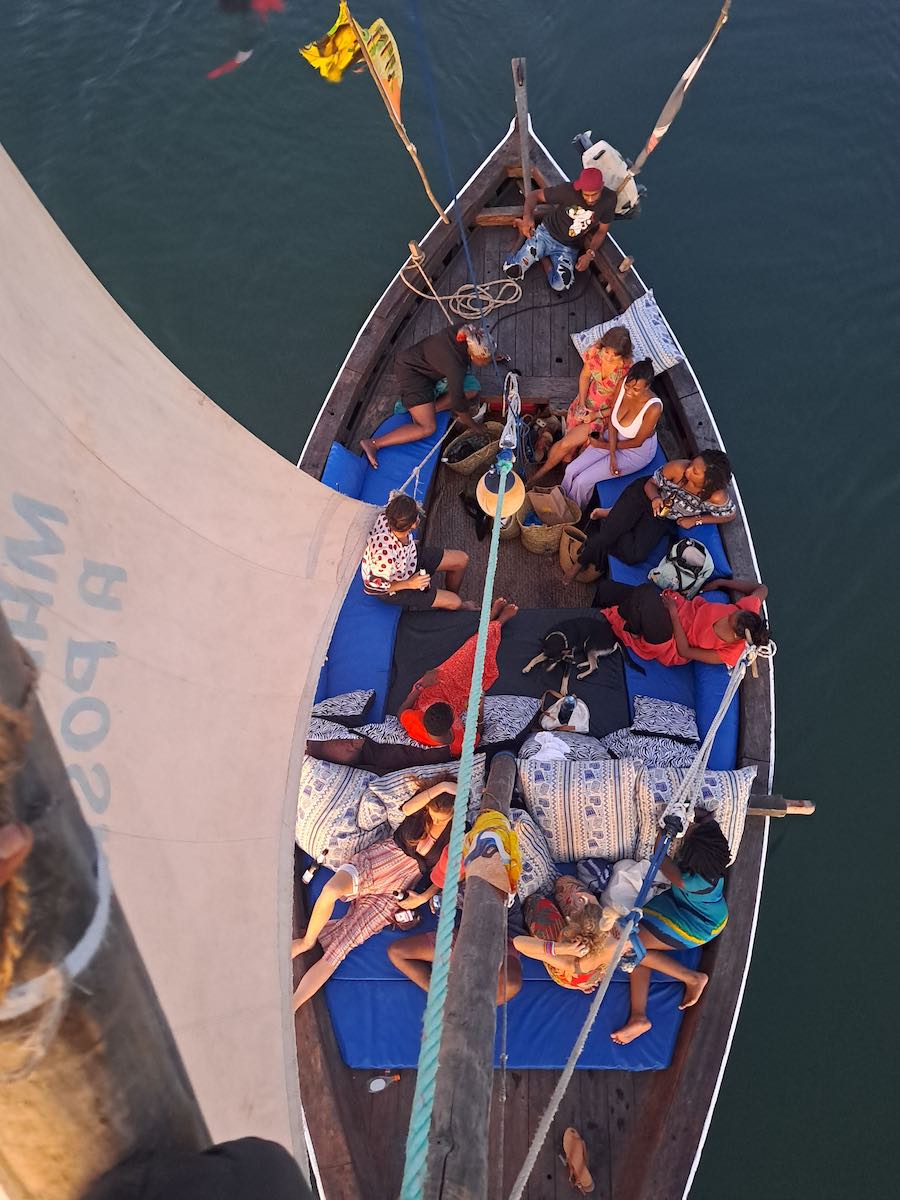
It is worth having a look at Africa Nomads, they offer great coliving and private rentals in Old restored Swahili mansionettes as well as private apartments, together with this they have a great program to discover the archipelago as well as the rest of the country. They are focused on creating the first Community for Digital Nomads in East Africa as well as opening more destinations and retreats in other places of Africa.
Essouira, Morocco
Contributed by the Wandering Wheatleys (contributed in 2018)
Essaouira is one of those towns where you arrive wondering “what exactly is there to see here?” And then find yourself weeks (or months) later, lounging at a beachfront cafe as you sip a glass of Moroccan wine and watch the sunset over the Atlantic.
Situated on the coast of southern Morocco is Essaouira, known as the ‘Windy City of Africa’. It offers a laid back southern California beach vibe that’s a welcome respite from the madness of the big cities of Morocco like Marrakech and Fez.
A sandy beach break and an onshore breeze make Essaouira an ideal spot for both kiteboarding and surfing. Or, if you’re not into watersports you’ll find a nice boardwalk for running the expansive stretch of beach as well as pickup soccer games, camel rides, and plenty of people watching.
In terms of lodging, Essaouira offers plenty of beautiful and inexpensive riads (tradition Moroccan hotels), modern hotels, and private rental apartments within the walls of the medina (old town) and lining the beachfront. Depending on your budget you can spend as little as $25/night for a private room with ensuite bathroom.
As with all of Morocco, food in Essaouira is delicious and affordable. Throughout the medina you’ll find small stands serving backpacker staples such as shawarma, falafel, and pizza for around $2-$4. Or if you prefer to sit down, you’ll find several restaurants with set menus that include soup, a main course, and desert for as little as $6. If you prefer to make your own meals you’ll find plenty of fresh produce available at low prices. For example a kilo of fresh fruit (pears, oranges, strawberries) will cost you less than $2.
Morocco is also known for its mint tea and you’ll likely consume loads of it to keep your caffeine levels high while running your digital-nomad business empire!
Being a predominantly Muslim country, Morocco isn’t exactly known for it’s drinking culture (besides tea, of course). But surprisingly, Morocco actually has an ideal climate for wine production and offers very good local wines. You’ll also find Essaouira is a bit more progressive when it comes to alcohol and there are a number of bars and restaurants in town that serve beer, wine and cocktails as well as a couple of liquor store just outside the walls of the old city.
Of course, internet is the lifeblood of any digital nomad and you’ll find almost all riads and most restaurants offer free, high-quality internet. You can also purchase a prepaid sim card for your smartphone through Maroc Telecom and 10GB of data will run you about $15.
We arrived in Essaouira expecting to spend 3 days and instead wound up staying for 3 weeks! We enjoyed morning beach runs, working at one of the beachfront cafes (Ocean Vagabond is our favorite), and surfing in the afternoons!
Morgan Bay, South Africa
Contributed by Marcelle Simone Heller, Grey World Nomads (contributed in 2018)
If you’d ask me the most beautiful place I’ve stayed during our past five nomadic years, I’d answer without doubt: Morgan Bay in South Africa. The small town is a hidden gem off the tourist map directly at the wild coast in the East of South Africa.
We spent six weeks in an artistic self-catering house with the most stunning views from its sundeck over the ever-changing lagoon.
Our rented house had all kind of luxury amenities, a fully furnished kitchen and a bath. But tv, radio or internet wasn’t offered as it was supposed to be a haven of tranquility and peace for families who want to enjoy a time-out from all the electronic devices.
In South Africa, you have decent cellphone connection almost everywhere – better than Europe in the countryside, but internet bundles are expensive. We used our cell phone as a modem and were able to down- and upload with a speed of 1 Mb/s and skype without an image. It’s not enough for live streaming but it’s sufficient for our work.
We used unlimited data bundles for 4.18 US$ a day when we had a lot to upload. Otherwise, we bought pay as you go recurring or once-off data bundles, 250 MB for 2.25 US$.
Life is otherwise stunningly cheap in South Africa, comparable with Thailand. Looking for monthly deals offseason, we always found accommodation as cheap as 400 to 600 US$ per month. There are plenty options if it’s not during the South African’s holidays from the beginning of December to mid-January.
This, with cost of living about 30% – 40% lower than in the US and Europe. A loaf of fresh bread (500g) costs about 1 US$ and a liter of milk 1.12 US$. Average restaurant prices are a bit more expensive with 10 – 20 US$ per Meal. Not an issue for us as, we like to cook for ourselves.
Morgan Bay is the place to be if you love unspoiled indefinite hikes over well-marked paths along the coast. If you want to ride horseback along the coast, hang out at the stunning beach of Morgan Bay and swim in the sea or rather in the quiet lagoon, you are spoiled of choice to spend time in the most beautiful nature you can imagine.
You can spend a day on the golf course in the neighboring town of Kei Mouth with most exciting coastal views and take a boat ride up the Kei River if you like. Or, if you need some more civilization for a change, East London is only a one hour’s drive away.
✈️ Protect your trip with Travel Insurance – We’ve started using Nomad Insurance by Safety Wing for affordable evacuation, international medical, and trip coverage.
Like this post? Pin it for later or share with friends


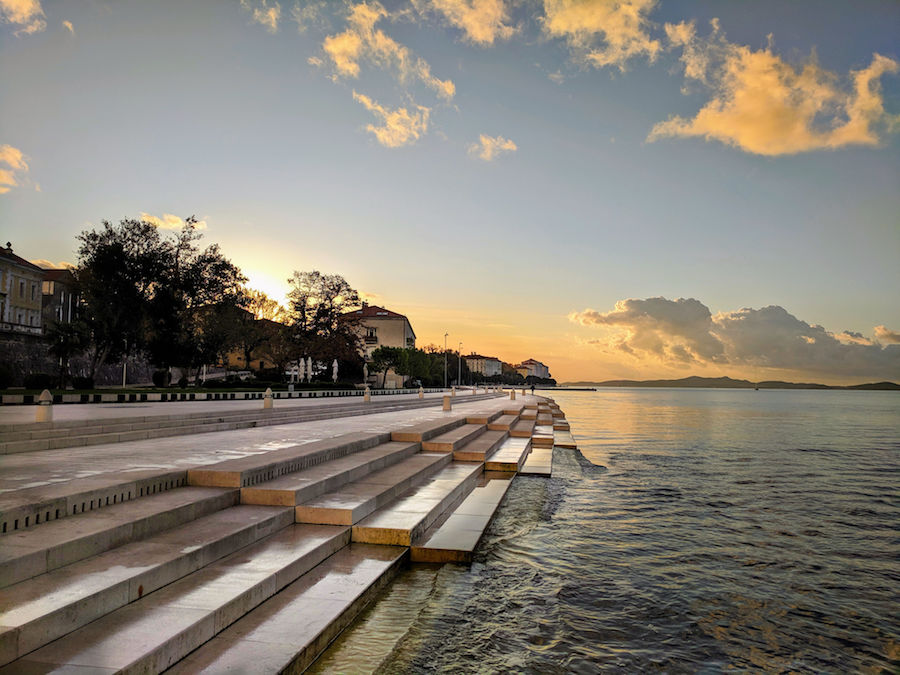
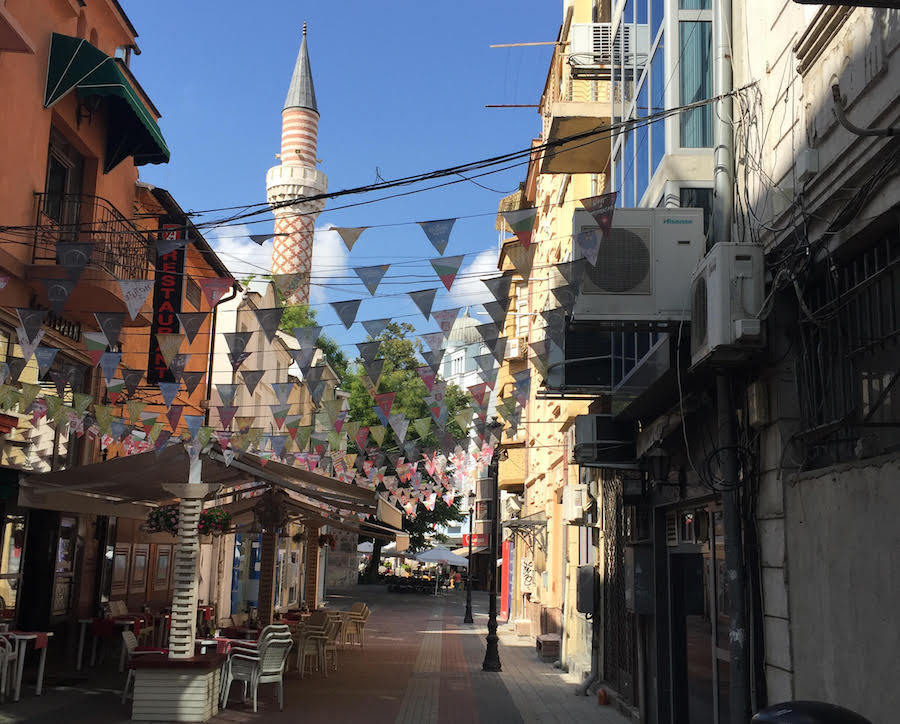
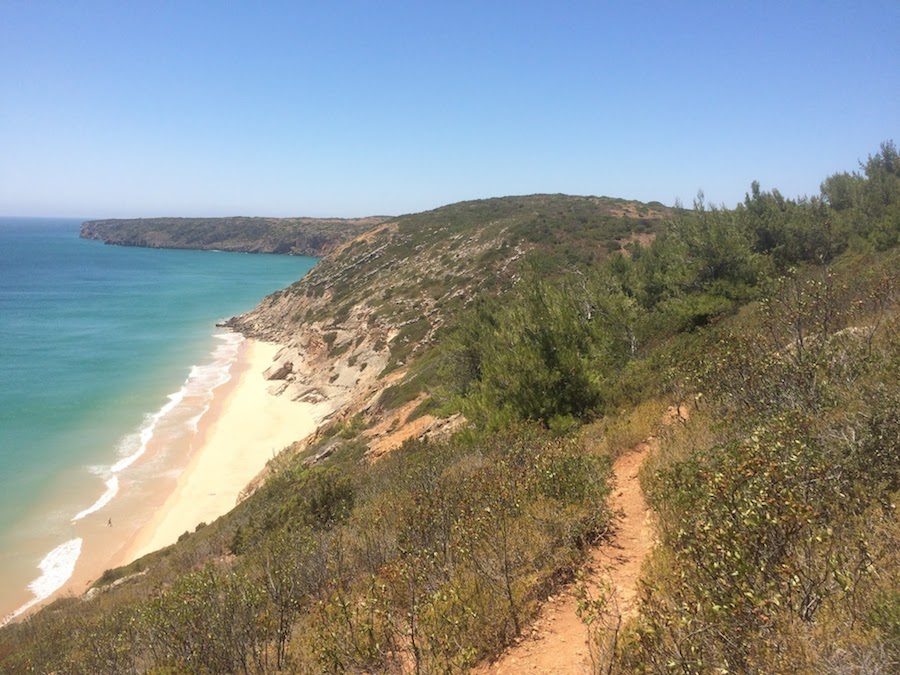
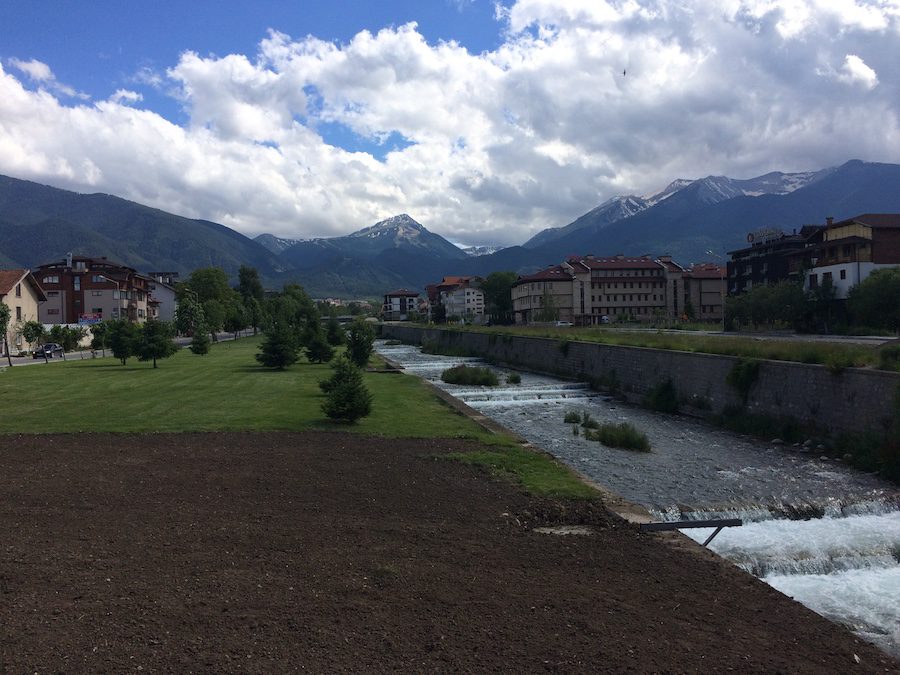
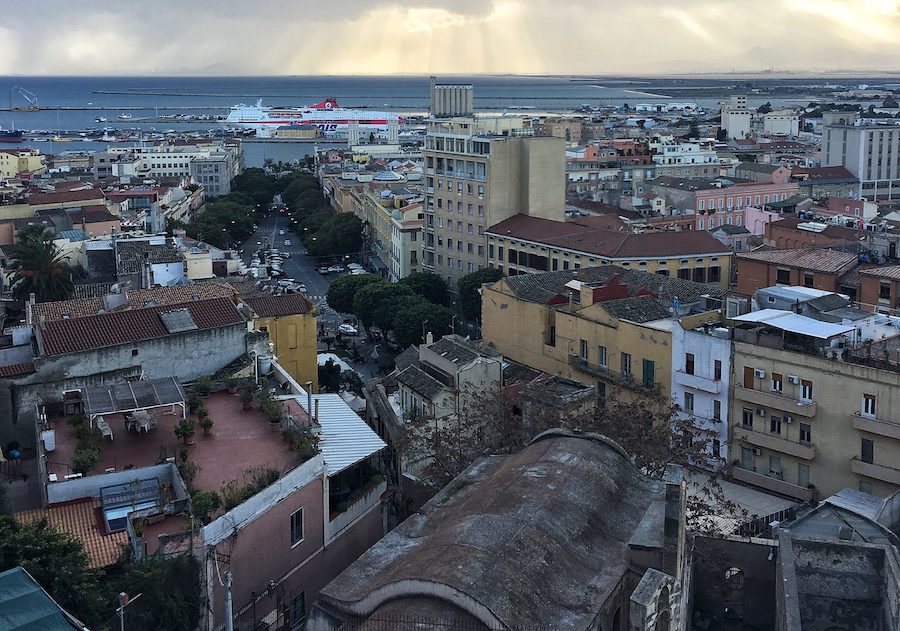
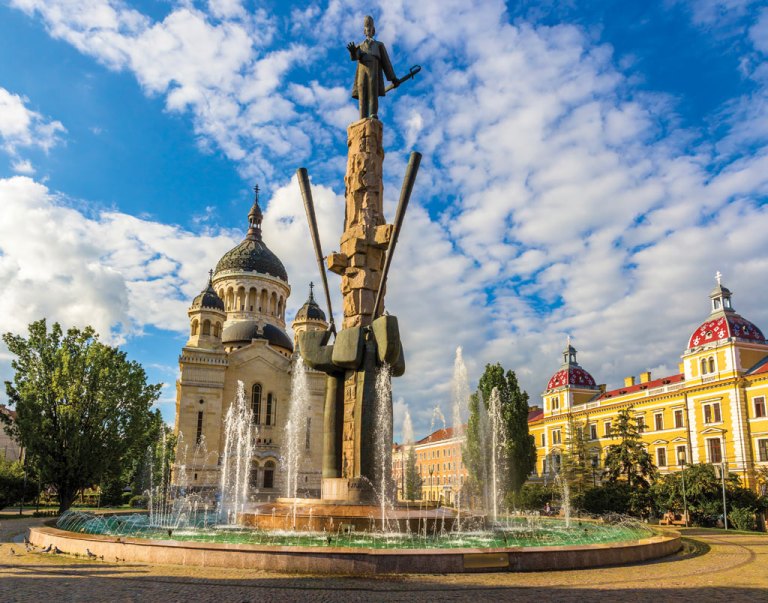
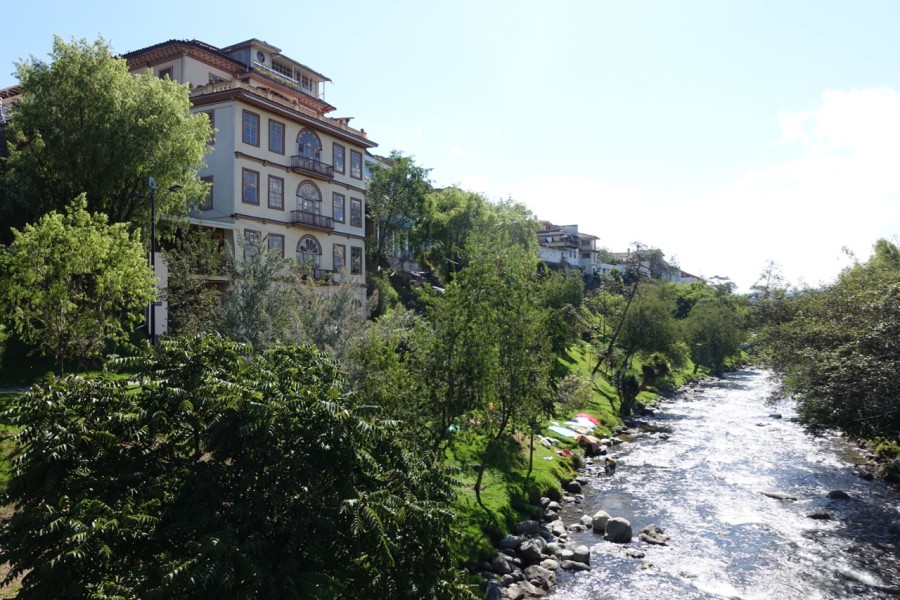

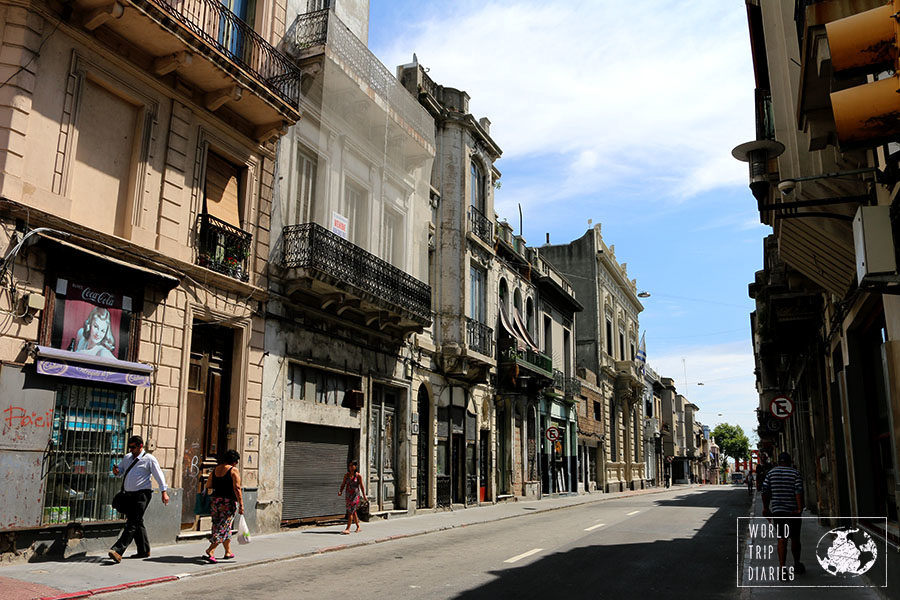
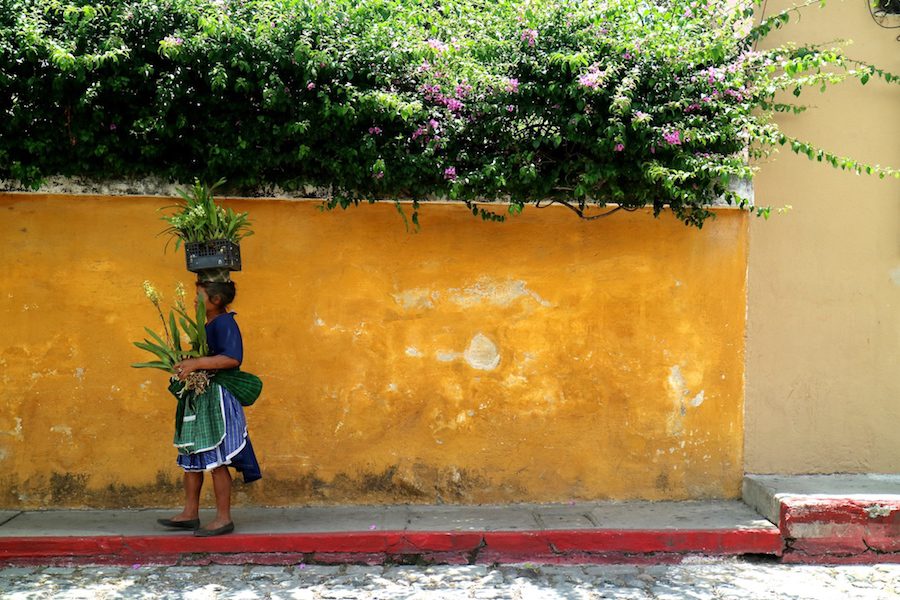
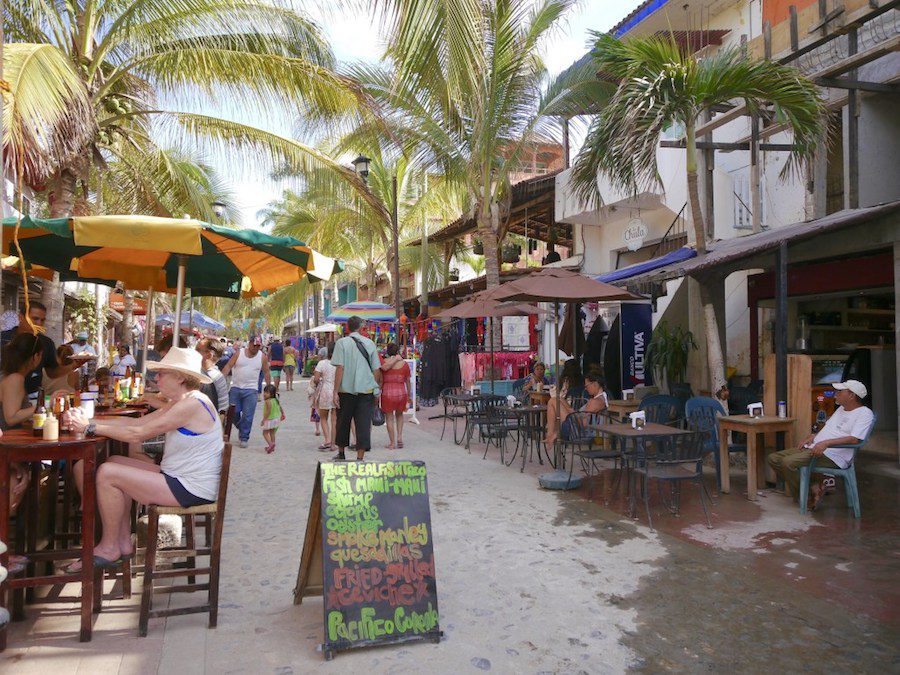
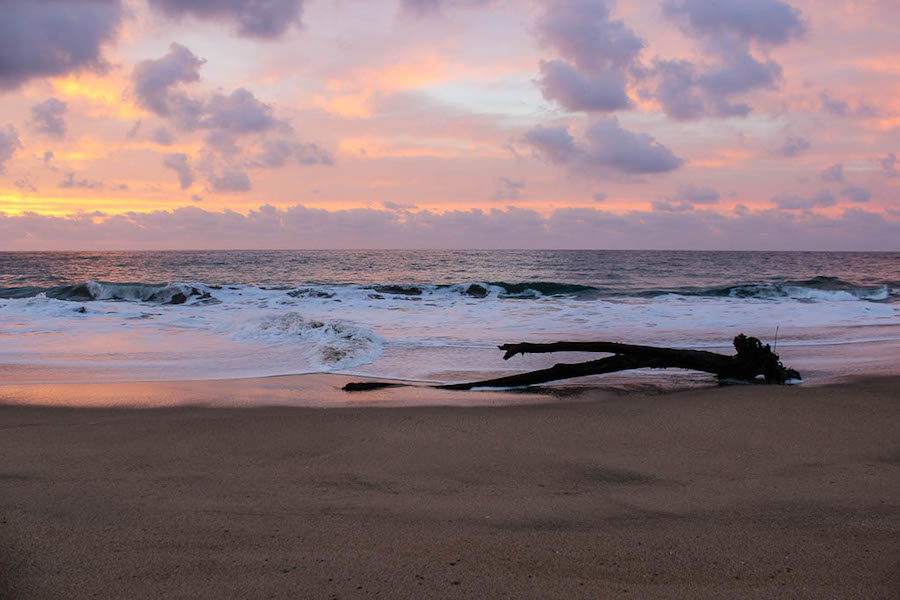

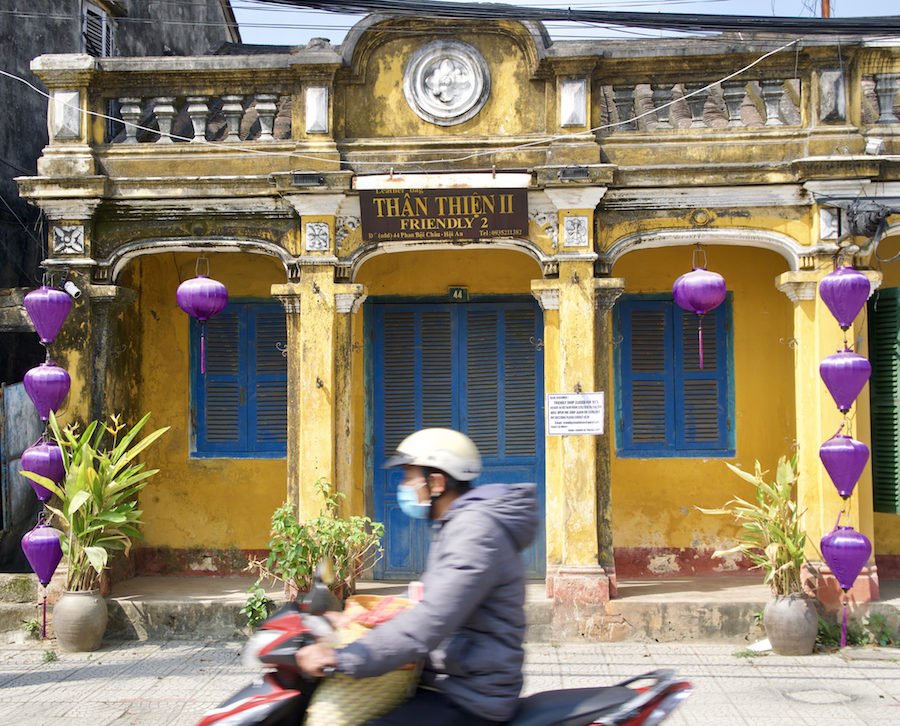
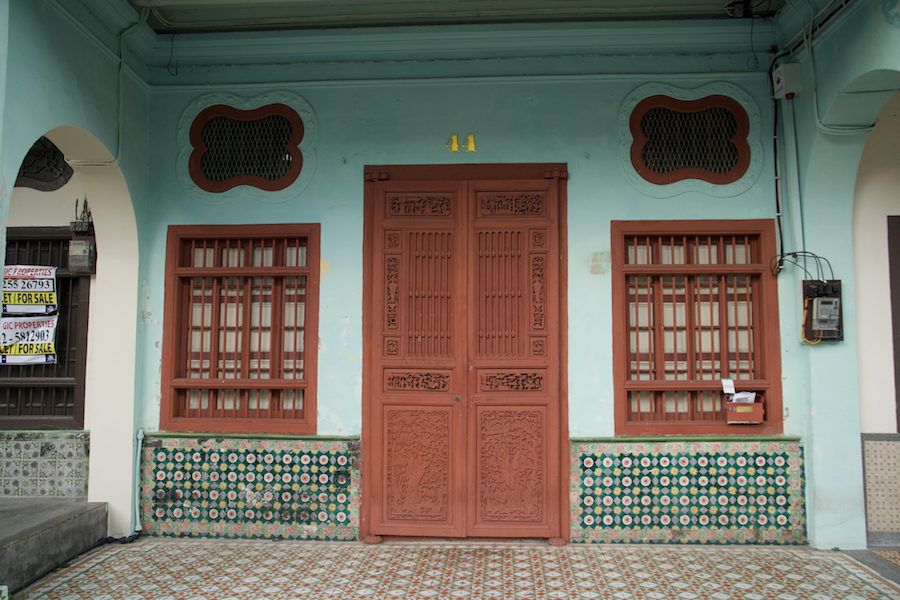
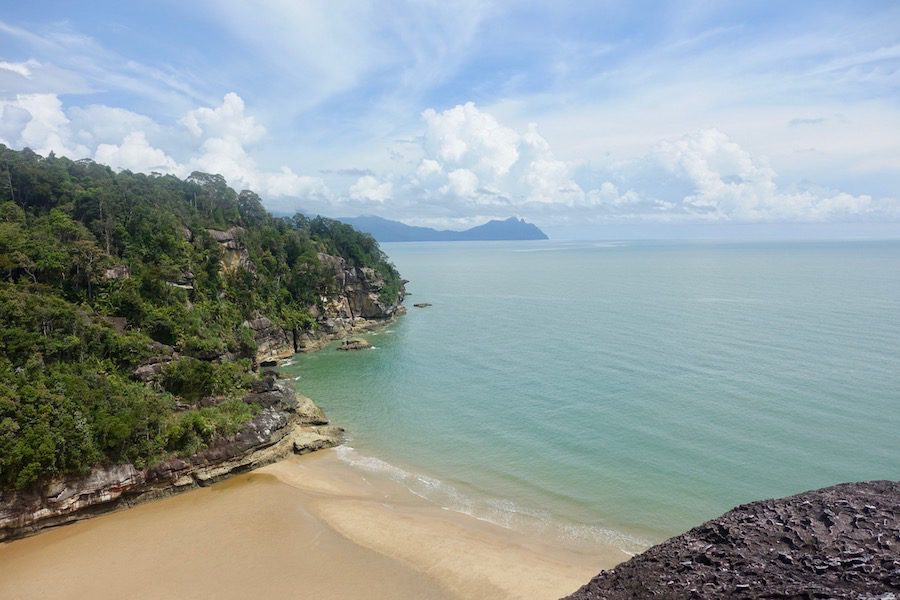

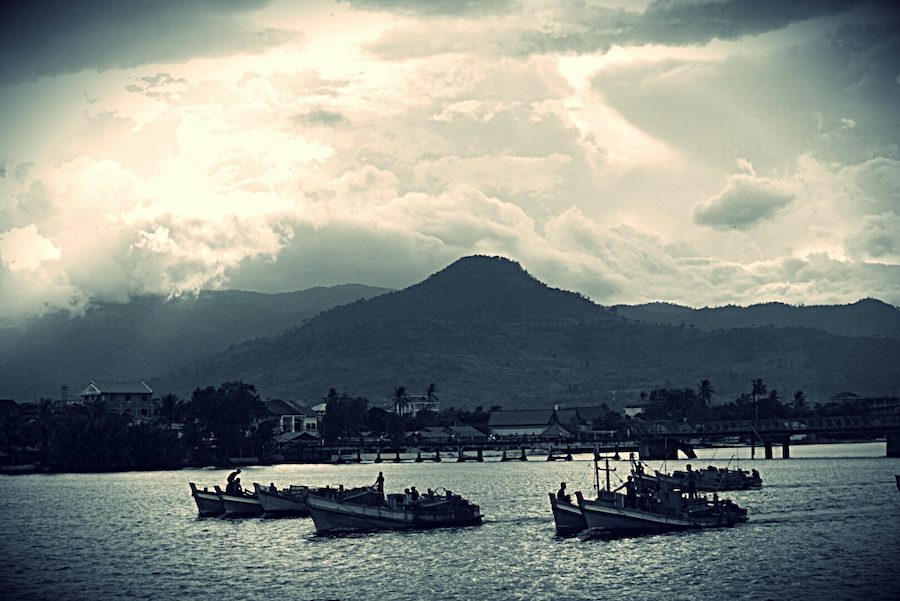

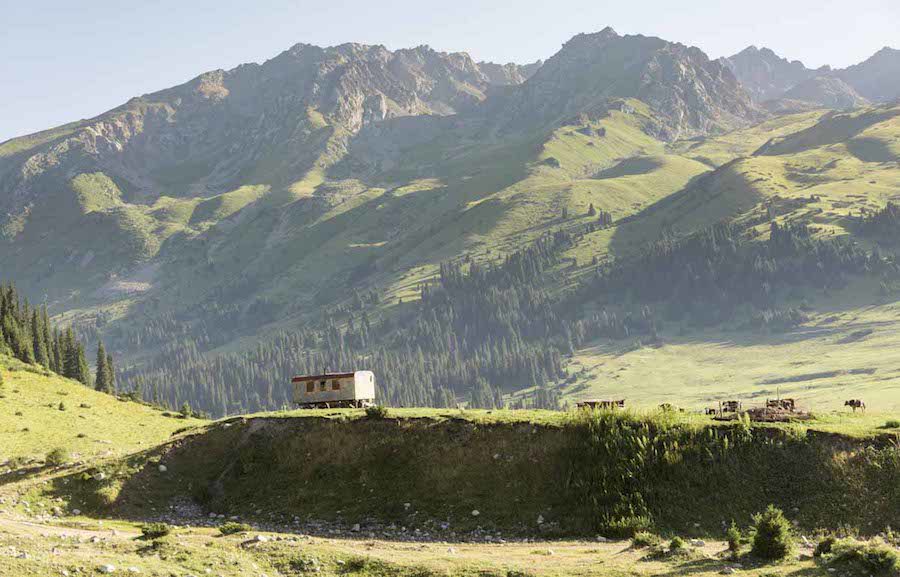

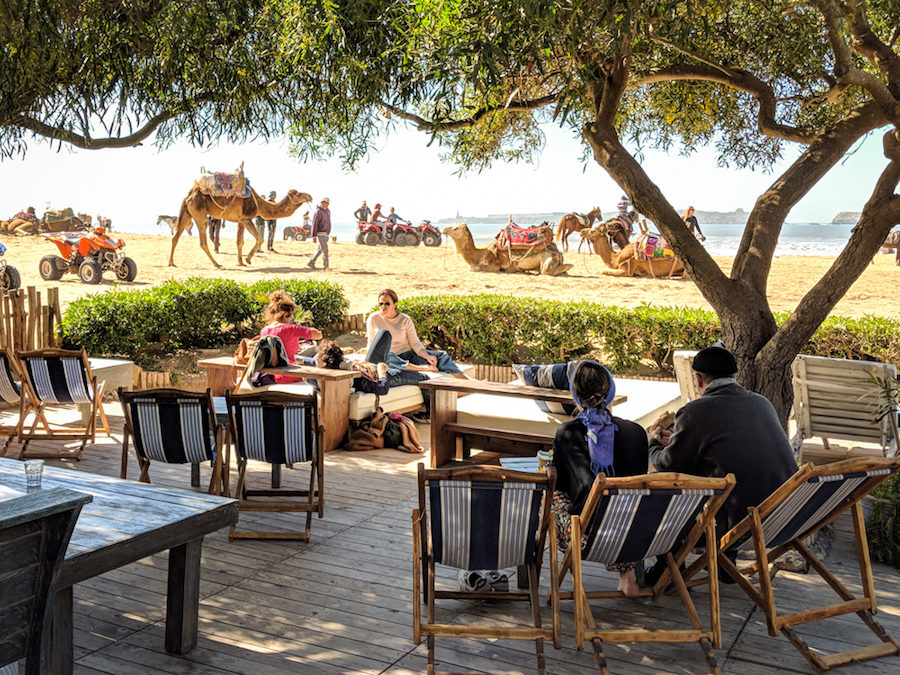
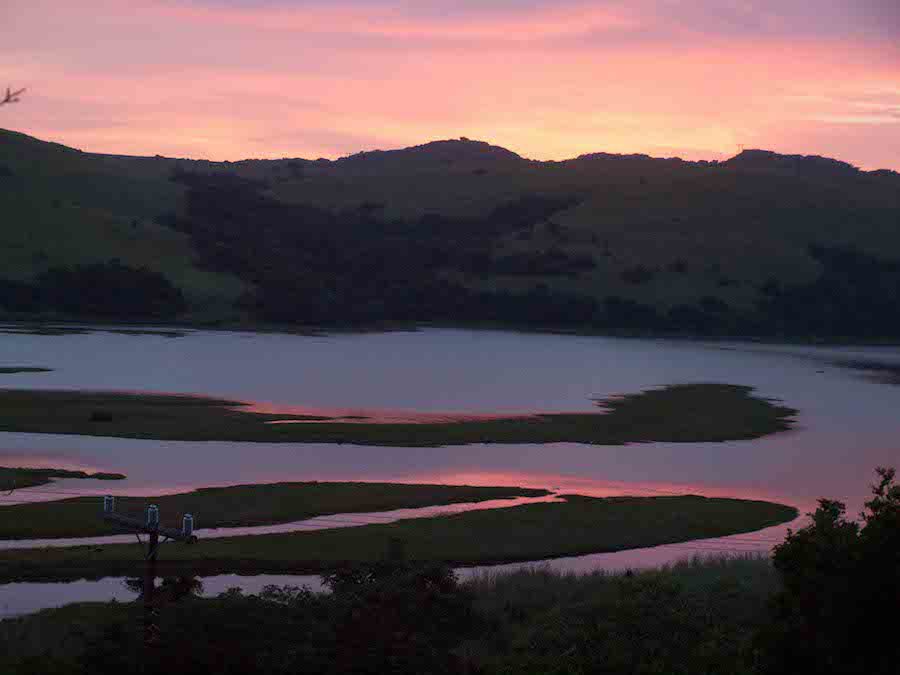

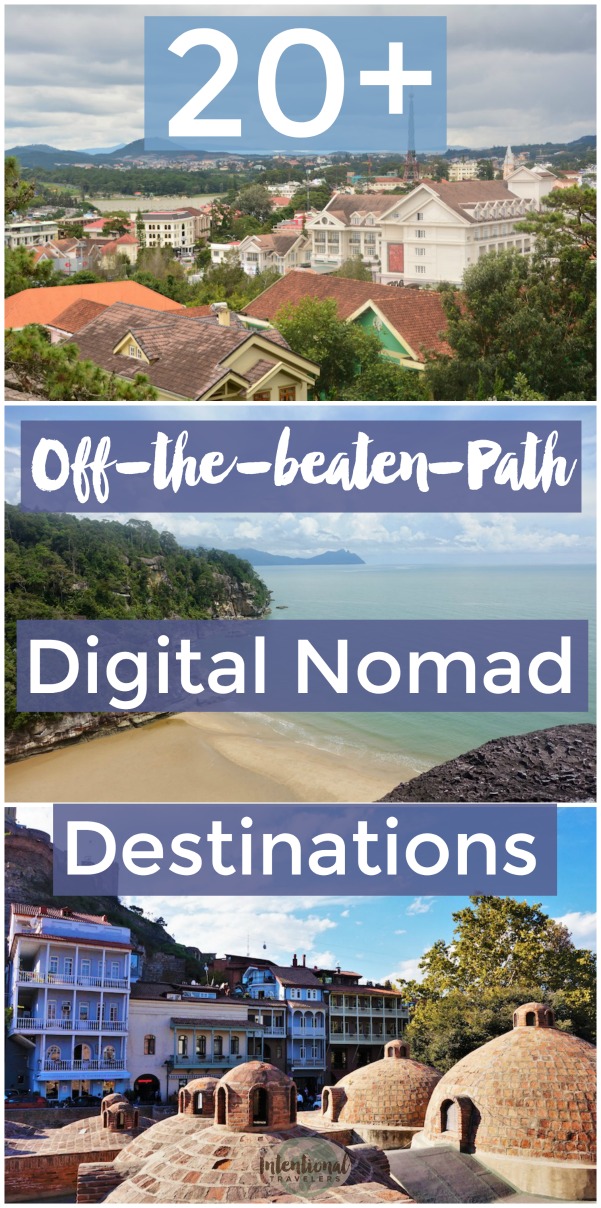
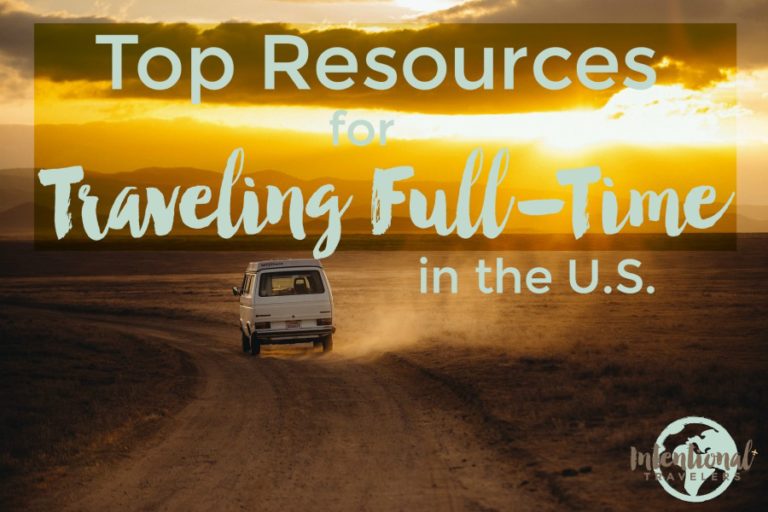

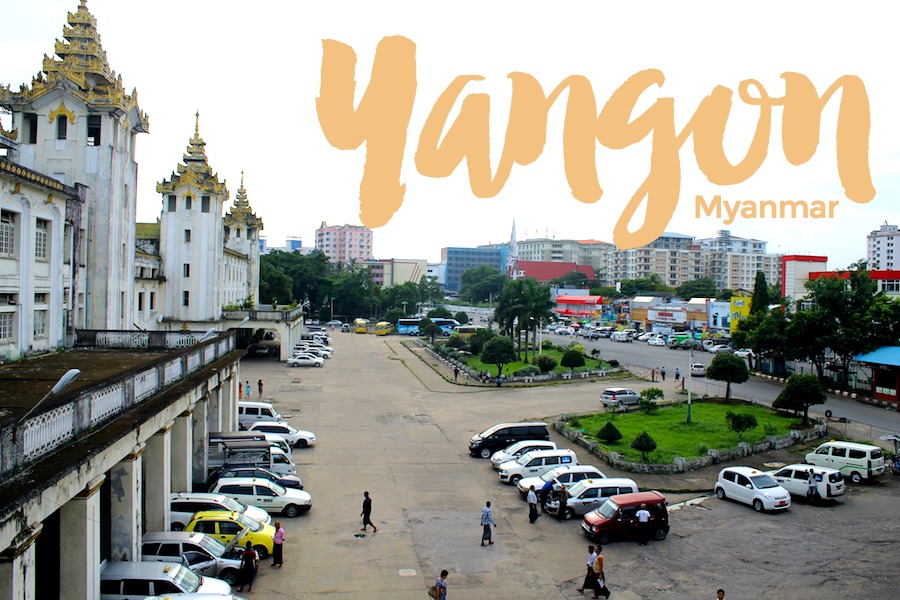
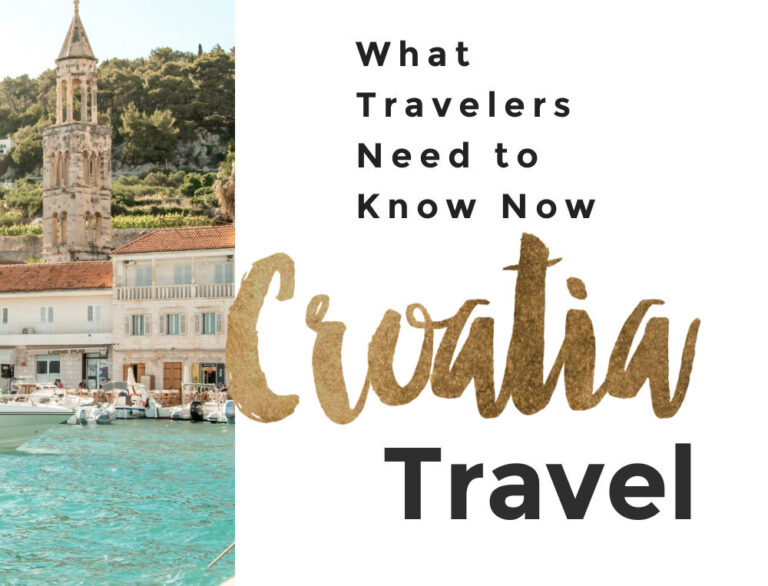
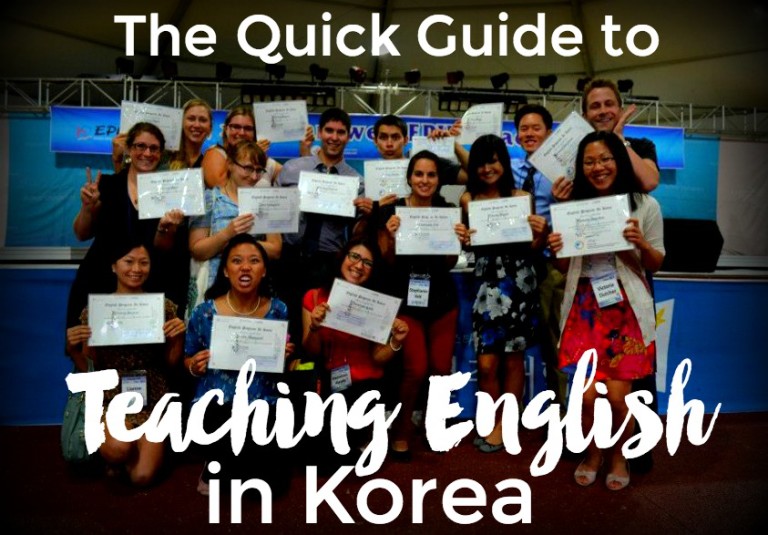

With this list and see how busy touristic Penang and Hoi An are getting, and really think you guys doing short to Yogyakarta, Java. It is land locked and maybe no aces to beaches and diving (compared to Bali), but the art scene is great, food wise even better.
Looking art your points of choosing, I will say check where it checks:
Check – Worth staying for a month or more (not necessarily because there’s tons of things to do but it’s just a pleasant/beautiful place to live in general)
Check – Has decent internet or cell data options
Check – Has amenities enjoyed by expats/visitors but not one big tourist trap (still has thriving local life/culture)
Check – Has a relatively LOW cost of living
Check – Not a big city/metropolis (think: no skyscrapers)
Hi! Love this post, I’m looking for a smaller town, quiet vibe myself. I liked Chiang Mai, but Bali (Canggu) is stressing me out! I need somewhere walkable and quiet and haven’t found anywhere in Bali that fits that bill. Also too touristy and too much of a party vibe here.
I’m curious if this post was written recently. It looks like Georgetown would be a great fit… but then I see it’s actually a city with skyscrapers and has a larger population than Chiang Mai. Looks like a cool place but not sure if it really has a “small town” feel more than a small city.
Hi Kat. Glad you appreciate this post. We haven’t gone to Bali for the reasons you mentioned, actually. Yes, this post is still fairly recent. GeorgeTown may be larger in population, but the feel depends on where you stay. There’s an Old Town/UNESCO heritage area that feels very small town and doesn’t have any skyscrapers. It’s still somewhat touristy but we liked staying right on the outskirts of the heritage zone.
If you like Indonesia, maybe you can try Yogyakarta.
These are great spots Michelle because each is well off the common, beaten path. I loved spending a month on/in Penang.
Ryan